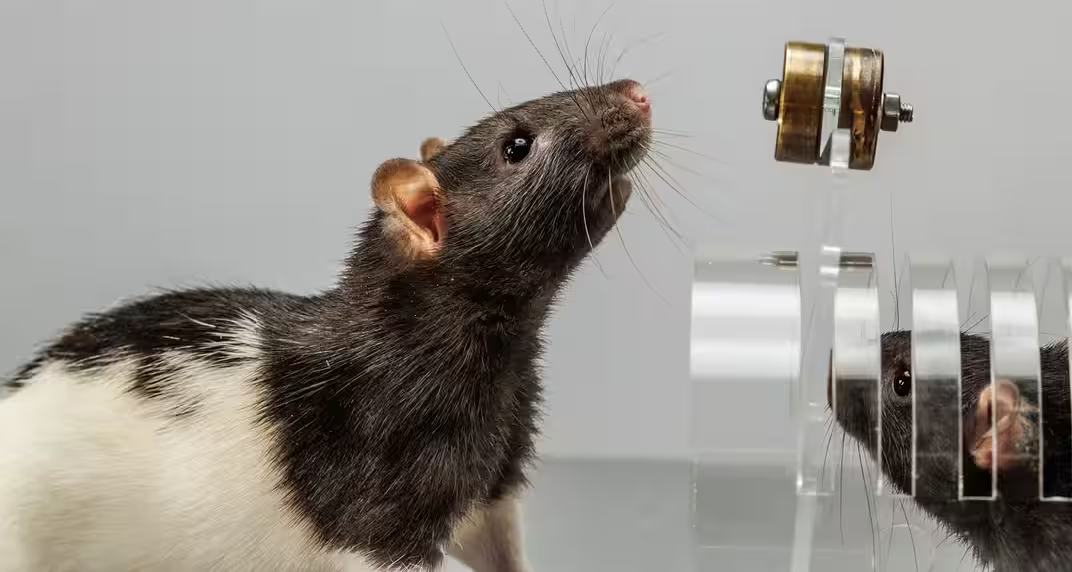Scientists have been confused about the purpose of ultrasonic vocalizations (USVs) emitted by rodents since the sounds were first discovered in the 1950s. One widely accepted theory suggests a role in social communication and suggests that rodents use these sounds to attract mates.
Rodents and ultrasonic vocalization
D., professor of psychology at the University at Buffalo College of Arts and Sciences. Eduardo Mercado III offers a new perspective on USV in rodents. Dr. According to Mercado, when rodents make these sounds, the goal is not romance, but something else entirely.
Dr. “This phenomenon has never been observed before in any animal, or even suspected, I think,” Mercado said. “By manipulating their environment and controlling the molecular interactions of the particles around them, they create new ways to transfer information.”
This radical idea could have far-reaching consequences, possibly leading to innovative treatments for psychological disorders and technological advances. One could even imagine these clever rodents having Jedi skills, as Mercado jokingly suggested. It’s as if they are practicing some kind of ‘magic’, manipulating their environment to their advantage.
An exploration inspired by the songs of whales
Dr. Mercado studied humpback whale songs and pioneered his revolutionary hypothesis. During a meeting about ultrasonic sonication, he noticed some inconsistencies in the rodents’ behavior that did not sit well with the popular view of the purpose of USV. Rodents explore their environment using their whiskers, visual scanning, and constant sniffing.
Interestingly, Dr. Mercado found that studies that monitored sniffing along with vocalizations showed that rodents sniffed the air immediately after each USV. Is it possible that these two actions are linked?
How can mice use ultrasonic sounds?
Vibroacoustics, a field concerned with ultrasonic vibrations, uses sound to manipulate clusters of particles. Drawing parallels, Dr. Mercado suggests that rodents may use their ultrasonic sounds to create clusters of scents in the air, improving their ability to detect airborne chemicals such as pheromones.
Also read – A mummified saber-toothed kitten was found with its fur intact
Dr. “This could be a coincidence, or it could indicate that they are functionally related,” Mercado said. “I knew that the field of vibroacoustics was using ultrasound to manipulate particles, and I immediately thought it might work for animals, too.”
In rodents, this manipulation will make it easier for humans to detect and identify others in their social circle; thus, it will be able to more accurately distinguish friends from strangers and rivals. This means that they help mice detect odors in the environment on their own by making ultrasonic sounds.
Consequences for human health
Rodent vocalizations have aided in the study of human disorders related to communication, emotional processing, and social behavior. Understanding of conditions such as anxiety, depression, schizophrenia, Parkinson’s disease, and autism has been advanced by research on rodent vocalizations.
“Rodents are at the forefront of biological research,” said study co-author Jessica Zhou, a research student at Harvard University. “Rodents, especially rats and mice, are the unsung heroes of the scientific world.”
If this intriguing hypothesis is confirmed, its contributions to biological research may increase.
Evolution of complex cognitive processes
An interesting evolutionary perspective shows how the sense of smell used for research spurred the evolution of more complex cognitive processes, including attention and memory. A deeper understanding of this system may provide insight into the evolution of these important cognitive functions. Although the potential use of USVs for rodents in scientific research is significant, several challenges need to be addressed to fully exploit their advantages.
Dr. Careful experimental designs are needed to empirically test Mercado’s hypothesis under different rodent species and environmental conditions. Additionally, advances in acoustic technology may improve our ability to capture and analyze these ultrasonic frequencies more precisely.
Mice, sounds and new innovations
The future path requires openness and commitment to innovation. The next few years may be important to confirm whether the rodents are truly altering their chemical environment or whether another unknown factor is at play. Understanding this process can contribute to the development of new technologies.
Also read – Scientists managed to keep atoms in a state of superposition for 23 minutes
In parallel with how understanding nocturnal animal vision led to the development of night vision goggles, the authors suggest that understanding the reasons for rodents’ engaging sound use could pave the way for nanoparticle sound manipulation technologies. The study was published in the journal Neuroscience and Biobehavioral Studies.













